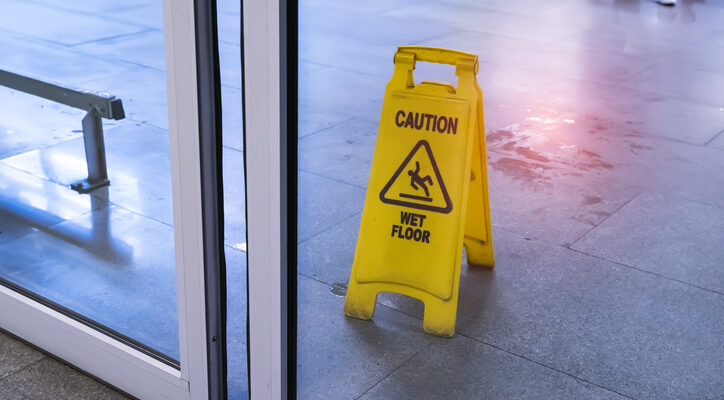The adage that all accidents are preventable might be correct—but avoiding some injuries takes more deliberation than others. When tenant injuries do happen, the situation can be challenging for self-storage facility owners to navigate.
Just ask the attorneys handling the Hyrcak v. Public Storage, Inc case. To keep your tenants safe and your insurance loss history at a minimum, here are a few significant take-aways from Public Storage’s experience.
Know Your Risks
On May 31, 2016, Ruth Hyrcak slipped and fell while accessing the self-storage unit she rented from Public Storage, Inc. She sustained costly injuries and pointed a finger (and lawsuit) at Public Storage’s dimly lit and water covered area.
Slip-and-fall claims are some of the most widespread, but others exist as well, such as:
- Overextension; lift, push, pull, hold heavy items excessively
- Blows from falling objects
- Repetitive motion; straining back and joints
- Body reaction; slow physical response
Maintain the Property
Identifying your self-storage facility’s exposures is an excellent first step to safeguarding your tenants. Plus, when you know these risks, you can keep up to date on property maintenance, including:
- Check lighting and emergency lighting
- Repair old pipes or exposed electrical wires
- Fix cracks in cement
- Keep fire extinguishers throughout the building
- Use signs to alert tenants of slippery areas
- Ensure bay doors open and close properly
- Clean up garbage and make trash cans readily available
Attending adequate maintenance will help to prevent tenant injuries and, subsequently, massive lawsuits.
Handle Injuries Effectively
When an accident does occur, make the right actions—quickly! Assess medical needs and call local authorities for help, if needed. Also, be sure to document the incident shortly after it happens, so you have a more accurate recollection.
One primary concern for self-storage facility owners is claiming financial responsibility for your tenant’s injury. It’s good to file an insurance claim but avoid issues of liability, such as blindly accepting the blame.
Adjust Precautionary Efforts
Lastly, as mentioned, some accidents seem unavoidable. However, it’s never a bad idea to take a second look at what caused it. Try to pinpoint why the accident happened. Perhaps you can make changes to prevent a similar accident in the future.
Prevent tenant injuries at self-storage facilities by taking a step back to survey the environment. Do what you can to avoid accidents, handle situations swiftly, and prevent them in the future. Not only will your tenants thank you, but so will your wallet.

